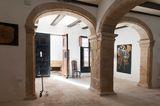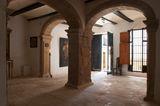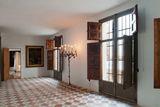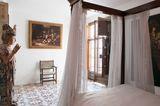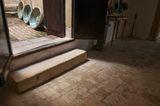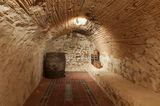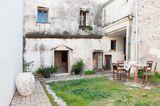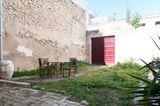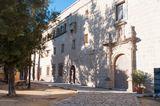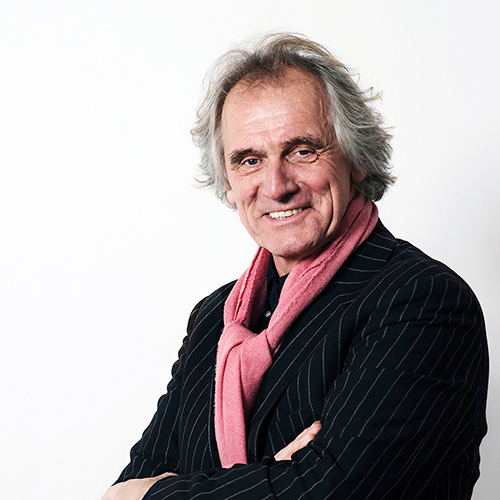สำหรับขาย, Euro 775,000
Province of Alicante, Spain, Benissa, Alicante-Valencia, สเปน
ประเภทอสังหาริมทรัพย์ : N/A
รูปแบบอสังหาริมทรัพย์ : N/A
ขนาดการก่อสร้าง : 8,611 ft² / 800 m²
ขนาดที่ดิน : N/A
ห้องนอน : 6
ห้องอาบน้ำ : 4
ห้องน้ำ : N/A
MLS#: N/A
คำบรรยายอสังหาริมทรัพย์
CARRER L’ANGEL – PALACIO BENAVENT
360º Virtual Reality viewings through VR-glasses available at the Amsterdam Office of Brinkman Fine Real Estate.
Benissa
Benissa is a coastal town located in the north of the province of Alicante, Spain. It is situated between Calpe and Teulada, in the comarca of Marina Alta. Evidence of human settlement in Benissa can be traced to the Bronze Age. One of the most famous archaeological sites in the area is the Benissa Necropolis, dating back to the 4th century BC. Benissa has a long and rich history, having witnessed both Moorish and Christian rule. The origin of the name ‘Benissa’, however, is disputed.
The town was occupied by the Moors, from the 8th century until the 13th century. Morish lore suggests it was named ‘Aben-Isa’, after ‘Aben’, the son of the Moorish ruler Abd ar-Rahman II, and his lover ‘Isa’. Abd ar-Rahman II had them tragically murdered following the ruler’s disapproval of the love match. Out of guild and grief, it is believed he later ordered to build a monument at the sight, naming it after Aben and Isa.
The first documented evidence of Benissa’s existence dates to the year 1245, when it was reconquered from the Moors by the Order of Santiago and became part of the Kingdom of Valencia. The Christians then named it ‘Benisa’, which, following another theory, originates from the Latin word of ‘Benicassum’, which means ‘high rocky hill’. (I).
Under Christian rule, Benissa was an important site of trade and aquicultural development, amassing wealth and status in the 15th and 16th century. This is evident today by just looking at the stunning architecture.
During the 18th century, Benissa experienced a period of growth, as the town became an important centre for the production of silk and wool textiles. This period also saw the construction of many of the town’s beautiful churches and public buildings. (II).
The town is known for its rich cultural heritage, with many important monuments and landmarks. The most notable examples of historic architecture in Benissa include the 17th-century Iglesia de la Asunción (Church of the Assumption) and the 18th-century Casa de Cultura (Culture House), the Almudaina Palace and the Castle of Benissa.
Palacio Benavent
In the very heart of the historic city center of Benissa, wedged between the Carrer de L’Angel and the Carrer de Santa Bárbara, stands another important historic landmark. The Palacio Benavent is an impressive and historic city palace steeped in history. Made out of local sandstone in the 16th century, the Palacio Benavent offers almost 1000 Sq. M. in- and outside living space with broad potential for private and commercial use. It thanks its name to a famous inhibitor, the Valencian composer Ricardo Benavent Feliu (1848-1929), who lived and worked in the palacio until the end of his life.
The magnificent facade of this Benissa city palace is a true masterpiece of local craftsmanship, boasting an exceptional blend of historical and contemporary design elements. The South-Western façade of the building stretches the full length of the Carrer de L’Angel. The placement of windows has been carefully considered, creating an ideal balance between natural light and privacy. Standing on the corner of the Carrer de L’Angel, one’s eye is immediately drawn to the beautiful ironworks that cover the large windows on the first floor.
The front façade, in which the main entrance is located, has a commanding presence thanks to the three-and-a-halve meter oak doors that provide the central entrance to the palacio. Within the right door of the portcullis, a smaller door is added. A heavy iron doorknocker invites you to step inside.
As one steps through, one is immediately struck by the grandeur of the palacio’s entrance hall. The warm, earthy tones of the sandstone pillars with belted arches lend an imposing, yet inviting and welcoming feel into the heart of this historic building. The entrance hall consists of two large compartments with heavy dark timbers that are still visible in the ceiling.
The floor of the entrance hall consists of square tiles and side-layed bricks with varied textures and patterns that create a sense of depth and dimensionality. The bricks lay in the extension of the portcullis, forming a pathway that leads to the main staircase, beautifully decorated with curled ironworks. The pathway was historically meant for donkey- or horse-drawn provision carriages to be brought into the building.
Natural light floods in through high-placed side windows and via an elongated open-plan lighting shaft at the heart of the building. The shaft provides entrance to the arched provision chamber, as well as to the workshop and subsequently to the garden entrance at the back of the building. Accessible via the open-plan staircase in the lightning shaft, one also enters various service quarters on the elevated level. An original sandstone chopping block is a reminder of the domestical usage of these rooms.
On the first floor of the southeastern wing of the palacio, a large banqueting hall is located. This imposing room has lots of natural daylight thanks to the large glass door which allow to step out and overlook the Carrer de L’Angel. The banqueting hall is covered with original Majolica tiles. During the years the Arabs were in Spain, they brought with them the Majolica method of decorating pottery, as well as to create beautiful tiles and ceramics, to which this floor stands testament. (III).
Natural light floods into the first floor guest apartments as one walks through to the front of the building. Here one finds a bedroom with en-suite bathroom and south-facing balcony, overlooking the old streets of Benissa.
Back to the central staircase one accesses the rear part of the Palacio Benavent with a string of rooms that may be converted into living spaces or additional guest apartments. A large courtyard is accessible through double glass doors in the rear of the building. It is a heaven of tranquility within the old town of Benissa covering 100 Sq. M. A three-and-a-halve meter high wooden gate provides gateway to the Carrer de Santa Bàrbara, which is accessible by motorvehicle. Santa Barbara, also known as the Great Martyr Barbara, was an early Christian Greek martyr born mid-third century in Heliopolis, Phoenicia. She is known as the patroness of armourers, artillery, engineers and miners. (IV).
Through the courtyard, one returns back inside through yet another entrance which ultimately leads to the back staircase. This staircase, decorated with beautiful Hydrolica tiles, leads all the way to the rooftop. On the way up, one passes another guest apartment with en-suite bathroom overlooking the courtyard and garden gates. The staircase leads up to the top floor of the Palacio, where the rooftop terrace, as well as another guest apartment are located.
Palacio Benavent’s terracotta rooftop terrace offers unparalleled views over the old town of Benissa. The Basilica of the Immaculate Conception and St. Peter the Apostle dominates the skyline, with in its background the Sierra de Bernia mountains. All the way through the pine trees, one catches a glimpse of the Mediterraneal Sea, which is just a 15-minute drive away.
Apartamento Benavent
Accessible via a private entrance on the Carrer de L’Angel is a separate and fully renovated apartment of 250 Sq. M. The first thing one notices upon entrance are the heigh ceilings and visible beams. A large patio at the heart of the apartment provides daylight to flood into the living- and dinging areas and grants access to a rooftop terrace overlooking the old town. The apartment is equipped with three generously sized bedrooms and two bathrooms, two reception rooms, a fireplace and a fully equipped kitchen.
The labyrinthine layout of Palacio Benavent is a result of historical development. Palacio Benavent was built over a long period of time, starting somewhere in the 16th century, and underwent several phases of expansion and renovation. This has led to a maze-like configuration of rooms, corridors, and staircases, which has created the opportunity for broad development potential at present day. The Palacio is perfectly suitable for private- or commercial use as a boutique hotel or gallery. A sight to behold, and a true gem in the heart of Benissa.
ขึ้น
360º Virtual Reality viewings through VR-glasses available at the Amsterdam Office of Brinkman Fine Real Estate.
Benissa
Benissa is a coastal town located in the north of the province of Alicante, Spain. It is situated between Calpe and Teulada, in the comarca of Marina Alta. Evidence of human settlement in Benissa can be traced to the Bronze Age. One of the most famous archaeological sites in the area is the Benissa Necropolis, dating back to the 4th century BC. Benissa has a long and rich history, having witnessed both Moorish and Christian rule. The origin of the name ‘Benissa’, however, is disputed.
The town was occupied by the Moors, from the 8th century until the 13th century. Morish lore suggests it was named ‘Aben-Isa’, after ‘Aben’, the son of the Moorish ruler Abd ar-Rahman II, and his lover ‘Isa’. Abd ar-Rahman II had them tragically murdered following the ruler’s disapproval of the love match. Out of guild and grief, it is believed he later ordered to build a monument at the sight, naming it after Aben and Isa.
The first documented evidence of Benissa’s existence dates to the year 1245, when it was reconquered from the Moors by the Order of Santiago and became part of the Kingdom of Valencia. The Christians then named it ‘Benisa’, which, following another theory, originates from the Latin word of ‘Benicassum’, which means ‘high rocky hill’. (I).
Under Christian rule, Benissa was an important site of trade and aquicultural development, amassing wealth and status in the 15th and 16th century. This is evident today by just looking at the stunning architecture.
During the 18th century, Benissa experienced a period of growth, as the town became an important centre for the production of silk and wool textiles. This period also saw the construction of many of the town’s beautiful churches and public buildings. (II).
The town is known for its rich cultural heritage, with many important monuments and landmarks. The most notable examples of historic architecture in Benissa include the 17th-century Iglesia de la Asunción (Church of the Assumption) and the 18th-century Casa de Cultura (Culture House), the Almudaina Palace and the Castle of Benissa.
Palacio Benavent
In the very heart of the historic city center of Benissa, wedged between the Carrer de L’Angel and the Carrer de Santa Bárbara, stands another important historic landmark. The Palacio Benavent is an impressive and historic city palace steeped in history. Made out of local sandstone in the 16th century, the Palacio Benavent offers almost 1000 Sq. M. in- and outside living space with broad potential for private and commercial use. It thanks its name to a famous inhibitor, the Valencian composer Ricardo Benavent Feliu (1848-1929), who lived and worked in the palacio until the end of his life.
The magnificent facade of this Benissa city palace is a true masterpiece of local craftsmanship, boasting an exceptional blend of historical and contemporary design elements. The South-Western façade of the building stretches the full length of the Carrer de L’Angel. The placement of windows has been carefully considered, creating an ideal balance between natural light and privacy. Standing on the corner of the Carrer de L’Angel, one’s eye is immediately drawn to the beautiful ironworks that cover the large windows on the first floor.
The front façade, in which the main entrance is located, has a commanding presence thanks to the three-and-a-halve meter oak doors that provide the central entrance to the palacio. Within the right door of the portcullis, a smaller door is added. A heavy iron doorknocker invites you to step inside.
As one steps through, one is immediately struck by the grandeur of the palacio’s entrance hall. The warm, earthy tones of the sandstone pillars with belted arches lend an imposing, yet inviting and welcoming feel into the heart of this historic building. The entrance hall consists of two large compartments with heavy dark timbers that are still visible in the ceiling.
The floor of the entrance hall consists of square tiles and side-layed bricks with varied textures and patterns that create a sense of depth and dimensionality. The bricks lay in the extension of the portcullis, forming a pathway that leads to the main staircase, beautifully decorated with curled ironworks. The pathway was historically meant for donkey- or horse-drawn provision carriages to be brought into the building.
Natural light floods in through high-placed side windows and via an elongated open-plan lighting shaft at the heart of the building. The shaft provides entrance to the arched provision chamber, as well as to the workshop and subsequently to the garden entrance at the back of the building. Accessible via the open-plan staircase in the lightning shaft, one also enters various service quarters on the elevated level. An original sandstone chopping block is a reminder of the domestical usage of these rooms.
On the first floor of the southeastern wing of the palacio, a large banqueting hall is located. This imposing room has lots of natural daylight thanks to the large glass door which allow to step out and overlook the Carrer de L’Angel. The banqueting hall is covered with original Majolica tiles. During the years the Arabs were in Spain, they brought with them the Majolica method of decorating pottery, as well as to create beautiful tiles and ceramics, to which this floor stands testament. (III).
Natural light floods into the first floor guest apartments as one walks through to the front of the building. Here one finds a bedroom with en-suite bathroom and south-facing balcony, overlooking the old streets of Benissa.
Back to the central staircase one accesses the rear part of the Palacio Benavent with a string of rooms that may be converted into living spaces or additional guest apartments. A large courtyard is accessible through double glass doors in the rear of the building. It is a heaven of tranquility within the old town of Benissa covering 100 Sq. M. A three-and-a-halve meter high wooden gate provides gateway to the Carrer de Santa Bàrbara, which is accessible by motorvehicle. Santa Barbara, also known as the Great Martyr Barbara, was an early Christian Greek martyr born mid-third century in Heliopolis, Phoenicia. She is known as the patroness of armourers, artillery, engineers and miners. (IV).
Through the courtyard, one returns back inside through yet another entrance which ultimately leads to the back staircase. This staircase, decorated with beautiful Hydrolica tiles, leads all the way to the rooftop. On the way up, one passes another guest apartment with en-suite bathroom overlooking the courtyard and garden gates. The staircase leads up to the top floor of the Palacio, where the rooftop terrace, as well as another guest apartment are located.
Palacio Benavent’s terracotta rooftop terrace offers unparalleled views over the old town of Benissa. The Basilica of the Immaculate Conception and St. Peter the Apostle dominates the skyline, with in its background the Sierra de Bernia mountains. All the way through the pine trees, one catches a glimpse of the Mediterraneal Sea, which is just a 15-minute drive away.
Apartamento Benavent
Accessible via a private entrance on the Carrer de L’Angel is a separate and fully renovated apartment of 250 Sq. M. The first thing one notices upon entrance are the heigh ceilings and visible beams. A large patio at the heart of the apartment provides daylight to flood into the living- and dinging areas and grants access to a rooftop terrace overlooking the old town. The apartment is equipped with three generously sized bedrooms and two bathrooms, two reception rooms, a fireplace and a fully equipped kitchen.
The labyrinthine layout of Palacio Benavent is a result of historical development. Palacio Benavent was built over a long period of time, starting somewhere in the 16th century, and underwent several phases of expansion and renovation. This has led to a maze-like configuration of rooms, corridors, and staircases, which has created the opportunity for broad development potential at present day. The Palacio is perfectly suitable for private- or commercial use as a boutique hotel or gallery. A sight to behold, and a true gem in the heart of Benissa.
CARRER L’ANGEL 6 – PALACIO BENAVENT, สเปน,Alicante-Valencia,Benissa is a 8,611ft² Benissa luxury N/A listed สำหรับขาย Euro 775,000. This high end Benissa N/A is comprised of 6 bedrooms and 4 baths. Find more luxury properties in Benissa or search for luxury properties สำหรับขาย in Benissa.


